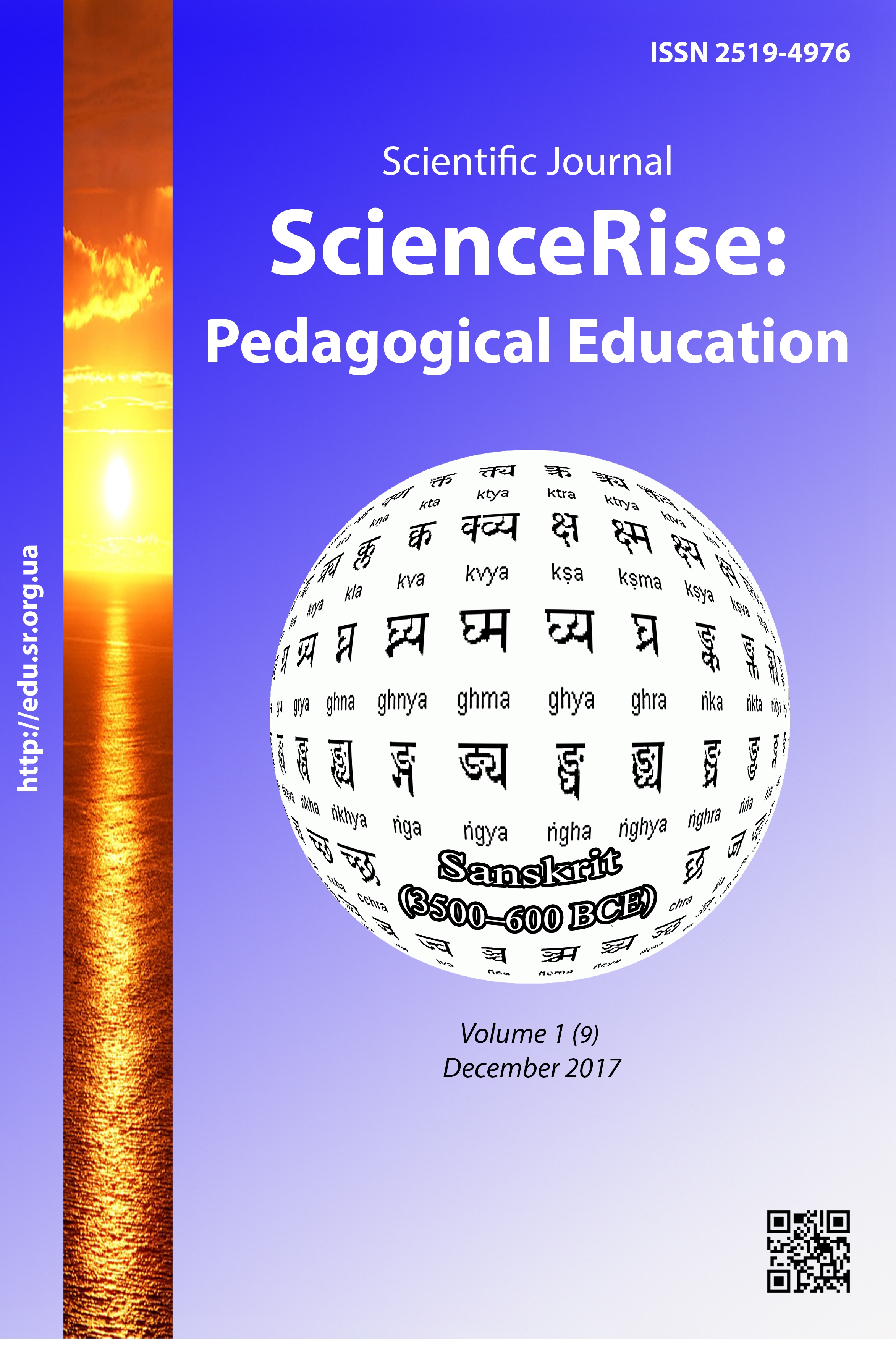The analisis of activity of the clergy unions in transcarpathia (mid XIX – early XX century)
DOI:
https://doi.org/10.15587/2519-4984.2017.91519Keywords:
pedagogical ideas, Ukrainian clergy, native language, national self-consciousness, Transcarpathian educationAbstract
The article analyzes historical experience of Ukrainian clergy’s activity in Transcarpathia in mid ХІХ – early ХІХ century through the prism of pedagogical value. It was elucidated, that clergy’s influence on formation and development of national education was crucial. On the base of studying products of Ukrainian clergy unions activity it was revealed, that the fight for spreading of native language was used as an instrument for Ukrainian culture development and national school creation. The edition of books, handbooks, calendars, prayer books, periodicals of Ukrainian direction widened the readers’ worldview, formed the national world understanding and awaked the national self-consciousness.
The cultural activity under the influence of denationalization was directed on Christian-patriotic education, formation of respect to history, culture, traditions and customs of native people. The creative searches of clergy favored the evolution of native language of Transcarpathian dwellers to the united norms of Ukrainian language. The edition of books, handbooks, calendars, prayer books, periodicals of Ukrainian direction in native language widened the readers’ worldview, formed the national world understanding and awaked the national self-consciousness. The spreading of information about historical unity of local dwellers with whole Ukrainian nation stated the self-identification of Transcarpathian Ukrainians as a part of Ukrainian nation. The education of people, national self-identification was realized by the means of native word: from love to Moscow through the blurred notion about Carpathian rusyn with its patois to the integral Ukrainian literary language with elements of local living speech
References
- Beskyd, N. (1928). Dukhnovych. Karpatskii svit, 1, 51–56.
- Habor, V. (2003). Ukrainski chasopysy Uzhhoroda (1867–1944 rr.): istoryko-bibliohrafichne doslidzhennia. Lviv: Lvivska oblasna knyzhkova drukarnia, 564.
- Keretsman, V. U. (1995). Istorychne kraieznavstvo na Zakarpatti poch. ХІХ – 30-kh rr. ХХ st. Uzhhorod, 225.
- Lisovyi, P. M. (1969). Zhurnalistyka Zakarpattia 50–70 rokiv ХІХ stolittia i yii zviazky z inshymy ukrainskymy zemliamy ta Rosiieiu. Uzhgorod: UzhNU, 51.
- Senko, I. (1997). Hazety i hazetiari ХІХ stolittia. Karpatskyi krai, 6 (10), 87–92.
- Josyp Kobal': Chomu zakarpatci – ne okremyj narod, a Laborec', Korjatovych i budyteli – ne geroi' (2015). Available at: http://zakarpattya.net.ua/News/139908-Iosyp-Kobal-Chomu-zakarpattsi-%E2%80%93-ne-okremyi-narod-a-Laborets-Koriatovych-i-budyteli-%E2%80%93-ne-heroi
- Myshanych, O. (2009). Politychne rusynstvo: istoriia i suchasnist. Available at: http://www.ukrcenter.com/Література/Олекса-Мишанич/26266-2/Політичне-русинство-історія-і-сучасність
- Pekar, A. (1997). Narysy istorii tserkvy Zakarpattia. Vol. 2. Lviv: Vydavnytstvo Ottsiv Vasylian "Misioner", 492.
- Beskyd, N. (1928). Dukhnovych. Karpatskii svit, 1, 51–56.
- Obshchestvo Sv. Vasyliia V. (1866). Misiatseslov na 1867 hody, 1, 69–86.
- Hadzheha, V. (1926). Nashi kulturni i tserkovni spravy na epyskopskykh naradakh r. 1773 u Vidny. Podkarpatska Rus, 3 (5), 107.
- Kondratovych, M. (1927). Korotka istoriia Obshchestva sv. Vasyliia Velykoho. Yuvyleinyi yliustrovanyi kalendar na perestupnyi rok 1928. Uzhhorod: Unyo, 41–61.
- Hnatiuk, V. (1897). Uhroruski kalendari. Zhytie i slovo. Lviv, 330.
- Sabov, K. (Ed.) (1966). Svit. Unhvar: Knyhopechatnia O. O. Vasyliian, 1.
- Hadzheha, Yu. (1925). Ystoriia «Obshchestva sv. Vasyliia Velykaho» y rech ko dniu 60-letiia ot eho uchrezhdeniia. Uzhhorod: Shkolnoi pomoshchy, 60.
- Lelekach, M. (1942). Ystoriia podkarpatskoi lyteratury. Unhvar: Knyhopechatnia O. O. Vasylian, 64.
- Voloshyn, A. (1995). Spomyny. Tvory. Uzhhorod: Grazhda, 39–73.
- Voloshyn, A. (1995). Kulturna pratsia hreko-katolytskoi tserkvy. Tvory. Uzhhorod: Grazhda, 102–106.
Downloads
Published
How to Cite
Issue
Section
License
Copyright (c) 2017 Галина Миколаївна Розлуцька

This work is licensed under a Creative Commons Attribution 4.0 International License.
Our journal abides by the Creative Commons CC BY copyright rights and permissions for open access journals.
Authors, who are published in this journal, agree to the following conditions:
1. The authors reserve the right to authorship of the work and pass the first publication right of this work to the journal under the terms of a Creative Commons CC BY, which allows others to freely distribute the published research with the obligatory reference to the authors of the original work and the first publication of the work in this journal.
2. The authors have the right to conclude separate supplement agreements that relate to non-exclusive work distribution in the form in which it has been published by the journal (for example, to upload the work to the online storage of the journal or publish it as part of a monograph), provided that the reference to the first publication of the work in this journal is included.








